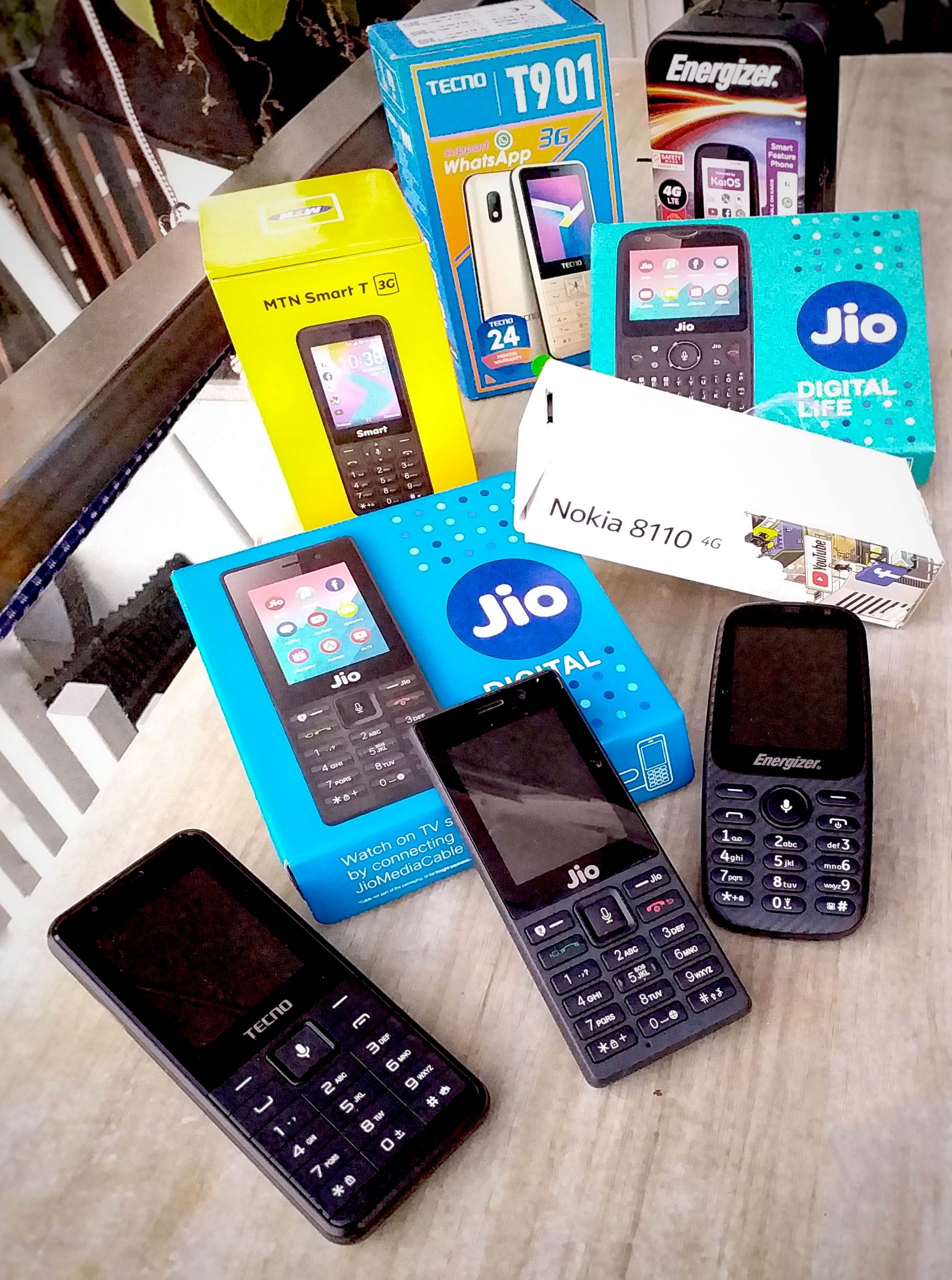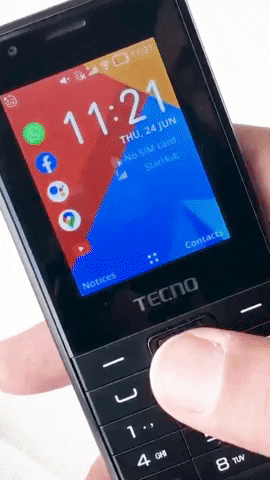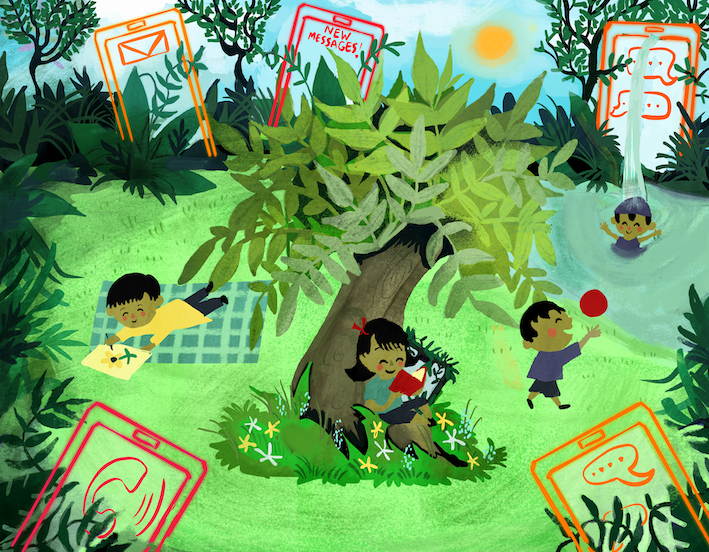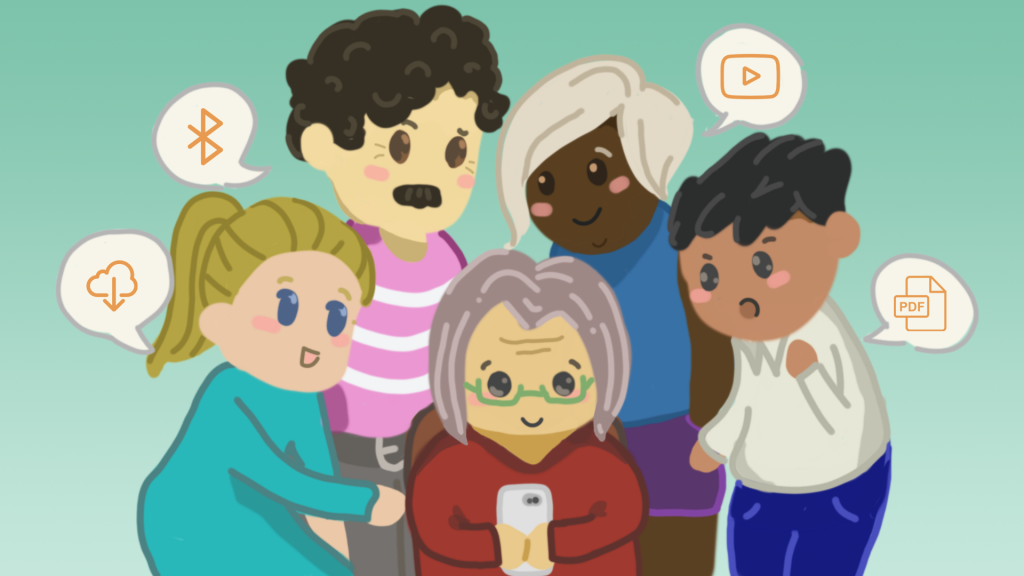We know them from the 90s and early 00s. Press buttons. Tiny screens. Blocky things you just use for calls and texts. With the smartphone being ubiquitous in affluent economies today, these phones of yesteryear are distinguished as ‘feature’ phones (why are feature phones called ‘feature’ phones?).
In recent years, companies have been making phones which look like these retro phones but updated with many of the functions that make us surgically-attached to our smartphones—multimedia, wifi and bluetooth, selfie-taking cameras, GPS to find the nearest oat milk latte and the glorious universe of apps.
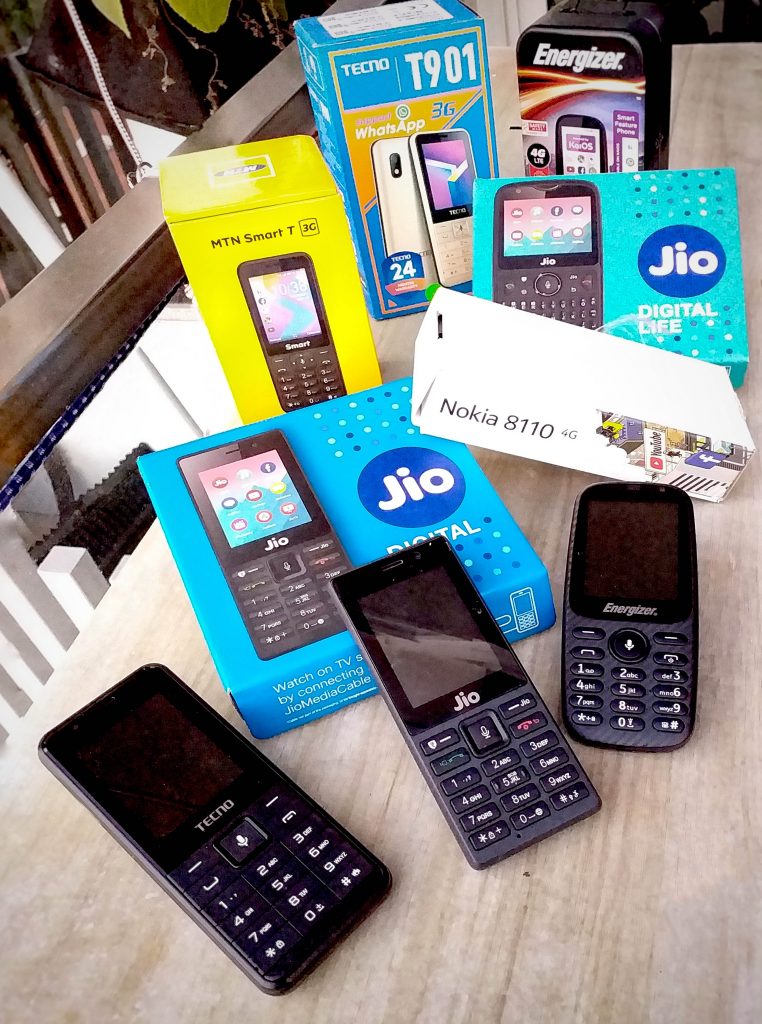
So how are ‘smart’ feature phones different from smartphones then?
Smart feature phones also come embedded with their own operating system that’s not Android or iOS (check out our next post on the KaiOS operating system). This operating system is called KaiOS. These KaiOS smart feature phones come pre-installed with the most popular apps: Whatsapp, Youtube, Facebook, Google Maps and Google Assistant.
Feature phones have much less memory than smartphones. To put things in context, an iPhone or Android runs on 12GB of memory. A smart feature phone chugs along on 40 to 50 times less than that, at 256 MB.
This comparatively limited memory capacity of feature phones makes it harder to multi-task by switching between apps or programs. Most smart feature phones don’t allow you to run more than one app at all.
Feature phones also use a simple graphical user interface, so graphics are much more basic than on your smartphone. And because of the small screen size (usually two or three times smaller than a smartphone screen), feature phones have to restrict the amount of content and graphics even further.
On the upside, less bells and whistles means the battery lasts way longer. Remember when you only needed to charge your phone once a week?
These differences make smart feature phones easier and cheaper to manufacture than smartphones, and consumers benefit from the savings. They can go for as little as USD10, like the Alcatel Myflip by AT&T. India-made and owned Jio phones start from USD20 and the Dixon XK1 (a collaboration between KaiOS and Cash Crusaders, from South Africa)starts from about USD30.
Who makes these smart feature phones?
Brands like Nokia, one of the mobile phone giants of the 90s and 00s, are in the feature phone game now. Also Alcatel (a French-Chinese brand owned by Nokia), Jio (by India-based Reliance Jio), MTN (by South African telco MTN Group Limited) and Tecno (from China). And remember Energizer, the battery brand that had the sunglasses-wearing Energizer bunny mascot with ‘tude? Energizer now makes updated retro feature phones (and yep, the Energizer phone batteries do last forever!).
So why haven’t I heard of feature phones before?
Consumers from affluent economies most likely wouldn’t have come across feature phones (smart or otherwise) in their neighbourhood malls or glitzy shopping strips, since the mobile phone markets there are dominated by Android and iOS devices, with their shiny capabilities and price tags. In developing economies, it’s a different story. Smartphones are out of reach for many, so the affordability of smart feature phones makes them a viable low-cost option for communication and access to the internet that would otherwise be inaccessible.
In our next post… more on KaiOS, the operating system that powers feature phones.
